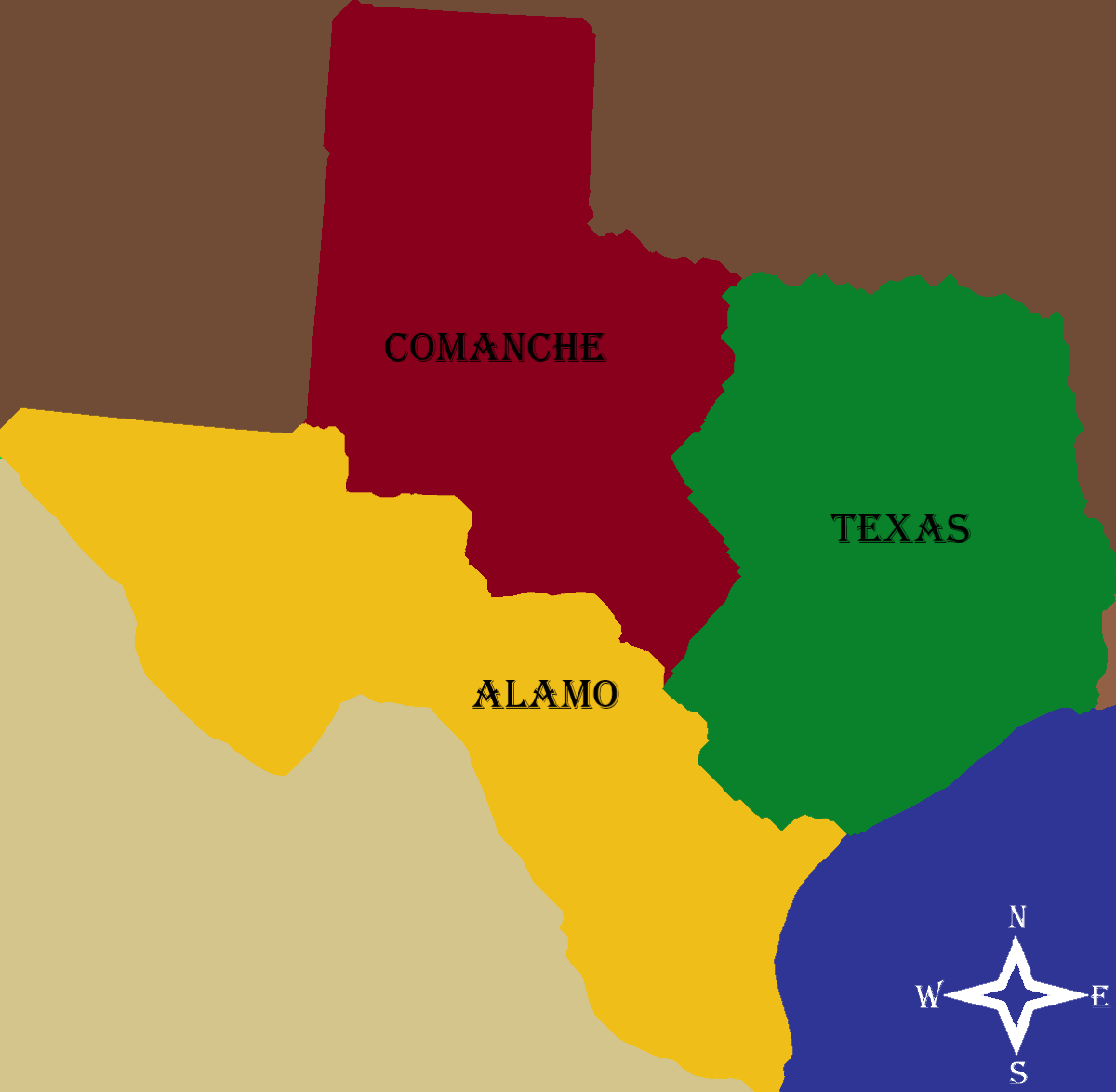Thanks to our negotiations with the United States while Texas was a republic, we retain the unique ability to spawn as many as four other states from our territory. In 1847, Issac Van Zandt ran for governor under the promise of dividing Texas into at least four states. He argued splitting the state would give its people more power on the federal stage and smaller regions would be able to govern themselves better than Texas could for all its far-flung regions.
If Van Zandt hadn’t died of Yellow Fever before the election was held, many Texans would be using different demonyms. Our ability to split regions has had a real-world influence. Texas Tech (hiss) was built to appease West Texans calling for statehood.
Everybody and their dog has ideas about what the five states of Texas should look like. To strike a better balance between states and the resources available within them, three might be a more sensible choice.
The new state of Texas would encompass the metropolitan areas of Dallas-Fort Worth, Austin, Houston and the land between them. It would be the most urban of the three and would have demographics and geography similar to other states in the South.
The state of Alamo, located roughly between the Rio Grande River and Interstate 10, would contain the greatest proportion of Latinos and Hispanics of any U.S. state. This Southwest state would be politically distinct from its neighbors and have a unique culture and history.
Comanche, spanning the original homelands of the Comanche American Indians, would be a mostly rural, solid red state with a slight Libertarian bend. Comanche would have more in common with other states on the Plains and Plateau than its neighbors to the south and east.
Each of the three would be between 75,000-90,000 square miles. These new states would be comparable to states like Minnesota, Washington and Kansas, putting them in the top 15 states by size.
But size isn’t everything — all three would hold abundant resources and wealth. All three regions would be rich in fossil fuels,minerals and renewable energy sources.
The new Texas would contain many of the region’s richest cities, advanced industry and headquarters of large multinational corporations.
Comanche would be an agricultural powerhouse. The High Plains of Comanche would continue to be America’s cattle capital. The state would also be a major exporter of other livestock, cotton, cereal crops and many others, like the ever-important mung bean.
Alamo would contain the industry of San Antonio, the fertile lands of the Rio Grande Valley and the plains of western Texas. Watermelon, grapefruit and cantaloupes, as well as other agricultural products, would be plentiful in Alamo.
Each of these new states would be interesting, diverse and successful powerhouses while having much greater autonomy and being able to better represent their people. Exploring the option of division opens many opportunities overlooked or restricted by a larger state.
There are currently no American Indian Reservations for those originally native to Texas in the state. Comanche, with its libertarian leanings, might feel inclined to honor its namesake with land in the state to incentivize the tourism and revenue associated with American Indian casinos, and that’s just one example.
Van Zandt’s reasoning for proportionment had merit. Smaller political units have proven to be more efficient and better at serving their people’s needs. Relatively speaking, Texas is massive. Amarillo is closer to Sioux City, S.D., than it is to Brownsville, and Texarkana is closer to Atlanta than it is to El Paso.
Realistically, our borders won’t change anytime soon, but it’s important to question why things are the way they are. Otherwise, you may find yourself in a world less ideal than it could be. And you may ask yourself, “Well … how did I get here?” Letting the days go by and leaving everything the same as it ever was is no solution. Whether it’s spawning new states or any other issue, we need to be conscious about our place in history and open to new and sometimes strange ideas.
Zachary Freeman is an anthropology junior and opinion writer for The Battalion.





















